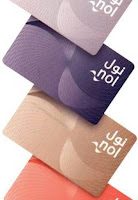 Registration number obscured to protect the guilty
Registration number obscured to protect the guiltyThe story is very familiar. Tailgated on the Emirates Road by the flashing 4x4, I move out of the left lane. The 4x4 pulls level and down goes the dark window to reveal two unbelted young male occupants. They hurl verbal abuse and make obscene gestures.
One of the disadvantages of having a easy-to-remember vanity plate on your car is that it’s, well, easy to remember. And that is how I was able to check on the Dubai police website that this particular 4x4 does not have the best record in the world. Fifty-two traffic offences since March 2010, over Dh30,000 in fines, and now the car is wanted for impounding. Yet curiously, there are no black points! Despite UAE law imposing 12 points plus a Dh1000 fine plus a 30-day confiscation for speeding at more than 60kph above the posted limit, no points have seen fit to appear. Frankly, anyone who continues to drive this offensively and doesn’t get any penalty points at all is a miracle of modern wasta. Insufficient, however, to prevent the list of offences from appearing on the internet at all.
Assuming a wave of the wasta wand doesn’t cause the fines to vanish at registration time, is the prospect of forking out Dh30,000 really going to worry someone who’s happy to spend millions on a Very Special number plate?
It is high time the traffic authorities - the RTA and traffic police - got all their ducks in a row so that “zero traffic fatalities by 2020” is even remotely achievable. May I helpfully suggest a couple of new year resolutions...?
1.Education
I’ve been unable to obtain any form of Highway Code for the UAE despite trying. There is clearly a need to devise and issue a rule book. This ought to be done at a federal level to ensure consistent traffic laws across the entire country. With 150 or so different nationalities all with their own ideas of what constitutes ‘correct’, different opinions inevitably cause a bunfight. All drivers should be issued with the rules when they take driver training, when they get their licences, and when they get their cars registered. Then ignorance of the law really will be no excuse.
2. Meaningful enforcement
Sticking cameras all over the highways can only detect speeds in excess of a posted limit or red light violations. It might provide the easiest and most lucrative solution, but almost by definition, the easiest method is the least effective. Perhaps more pullings over to discuss tailgating, speeding, driving on the breakdown lane, mobile phone use, lane discipline and seatbelts are needed, along with inspections of tyres, lights and window tints.
3. Effective penalty points
It occurs to me that it’s quite difficult to collect black points except by driving spectacularly badly. A driving ban only occurs after accruing 24 points, and anyway they disappear after a mere six months. I am therefore amazed to read in the news that some drivers even then somehow manage to get themselves disqualified.
How about linking the points to the motor insurance? Someone who collects plenty of points obviously has a proven inability to stay within the rules and is therefore presumably a higher risk.
4. Disqualification
It’s simple really. Having driven so badly that you got yourself banned, if you’re caught behind the wheel you go to jail. Go directly to jail, do not pass ‘Go’, do not collect £200. If you can’t be trusted to stay off the road, the State can provide some assistance.
The alternative approach is to continue to permit mayhem and destruction on the Emirates’ roads. Use automated means to detect speeding and don’t chase up on the fines for up to a year. Don’t bother enforcing the wearing of seat belts; ignore drivers’ mobile phone use; disregard excessive window tints. Pay no heed to driving on the breakdown lane; overlook bald tyres and defective lights. Turn a blind eye to non-existent lane discipline; be oblivious to illegal parking. Rather like what seems to occur most of the time anyway.
And having completely removed all functions of the traffic police, it’s logical to abandon having the Force at all. Instead, the huge budget savings can be reallocated to ambulances, hospitals and funeral directors.
]}:-{>









































